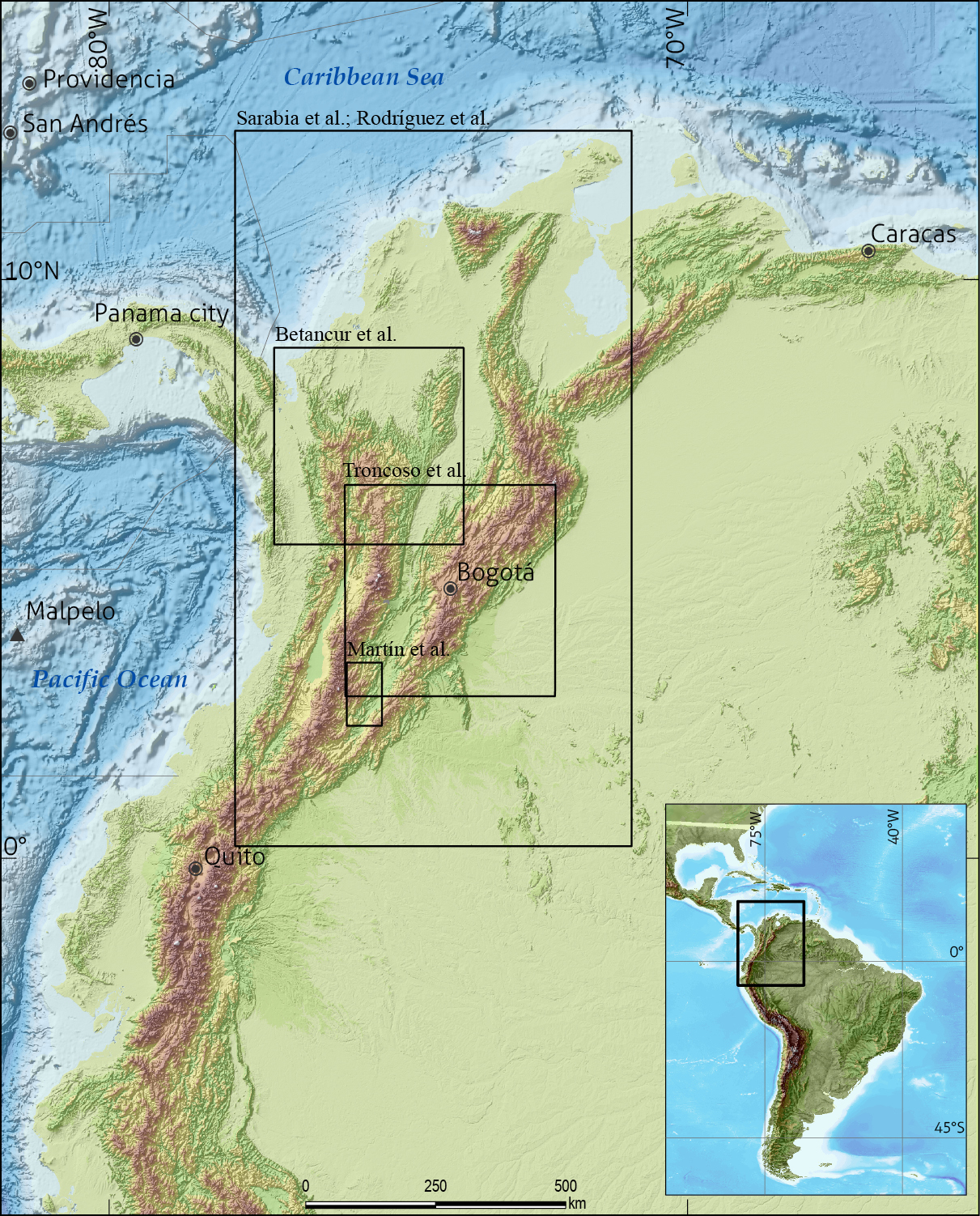Editorial
Palabras clave:
Editorial
Licencia
Derechos de autor 2022 Servicio Geológico Colombiano

Esta obra está bajo una licencia internacional Creative Commons Atribución 4.0.
Descargas
Cómo citar
Número
Sección
Publicado
Resumen
Boletín Geológico publishes Issue 49(2), 2022, with the following articles:
Sarabia et al. present in a data article the availability of information on the Macroseismic intensities and the effects of earthquakes that have caused considerable damage in Colombia. These data are available to the public through the Historical Seismicity Information System of Colombia (Sistema de Información de Sismicidad Histórica de Colombia [SISHC]), which is an application on the web with free access. There are more than 5000 intensity data points and approximately 4000 reports associated with the effects of historical earthquakes, which can be used in a variety of ways, such as academic, scientific, and institutional studies, historical research, and seismic hazard and risk management evaluations.
Rodríguez et al. report new and compiled data indicating that arc magmatism in the western paleomargin of Gondwana began in the Carboniferous and continued during the Permian and Early Triassic. Subsequently, the magmatism reactivated during the Early and Middle Jurassic due to the subduction of the Farallon Plate under the continental paleomargin. The arc pluton belts are distributed from the edge of the paleomargin toward the interior of the continent in the same orientation as the slab.
Betancur and Martínez synthesize useful information to identify potential aquifers for future hydrogeological exploration in Antioquia. This work is based on geological maps of the Servicio Geológico Colombiano (SGC) –scale 1: 100 000– and other official sources.
Troncoso et al. evaluate the potential areas for the exploitation of raw construction materials, considering that these materials are a strategic line for the development of the country. A pilot zone of Bogotá was defined by a radius of 200 km around the city and evaluated, in which lithostratigraphic units with potential for natural aggregates in areas free of mining licenses were studied through geotechnical testing of samples.
Martín et al. present the results of the geological exploration conducted in the western sector of the Neiva subbasin, Colombia, which included geological mapping at a scale of 1:25 000 and detailed stratigraphic surveys of eleven stratigraphic sections. These works provided a better knowledge regarding the lithostratigraphic units that contain phosphates and their accumulation processes. Additionally, the authors propose an outline of the possible basin paleotopography during the Santonian-Maastrichtian interval.
Boletín Geológico acknowledges the academic collaboration of the reviewers and their commitment to the peer-reviewed process involved in this issue. The reviewers belong to the following institutions:
Centro de Desenvolvimento da Tecnologia Nuclear - Brazil
Defl University, The Netherlands
Fundación Universitaria Agraria de Colombia
Universidad de Caldas, Colombia
Universidad de Sao Paulo, Brazil
Universidad de Sevilla, Spain
Universidad EAFIT, Colombia
Universidad Nacional de Colombia, Colombia
Universidad Pontificia Bolivariana, Colombia
Referencias bibliográficas
-








